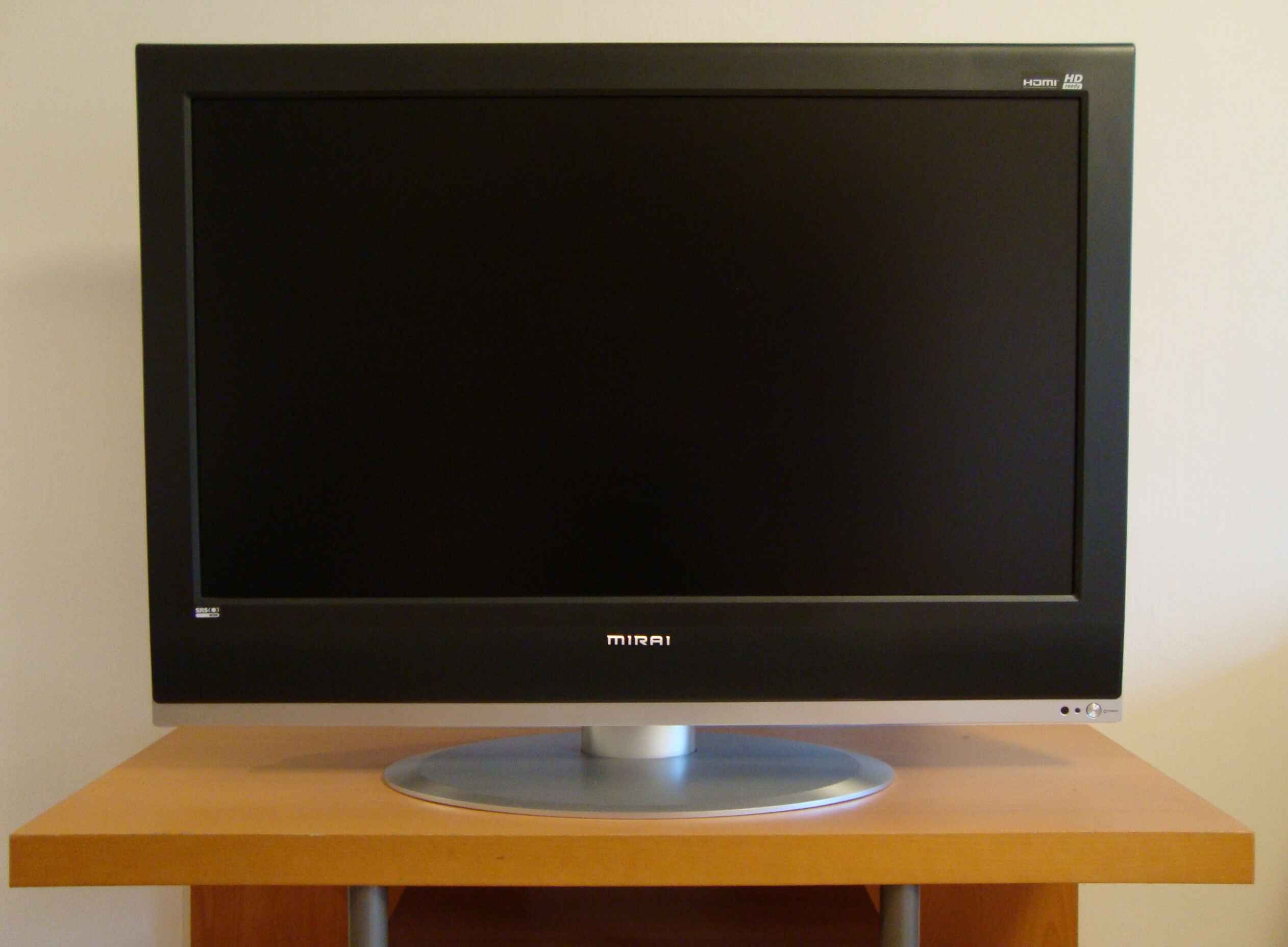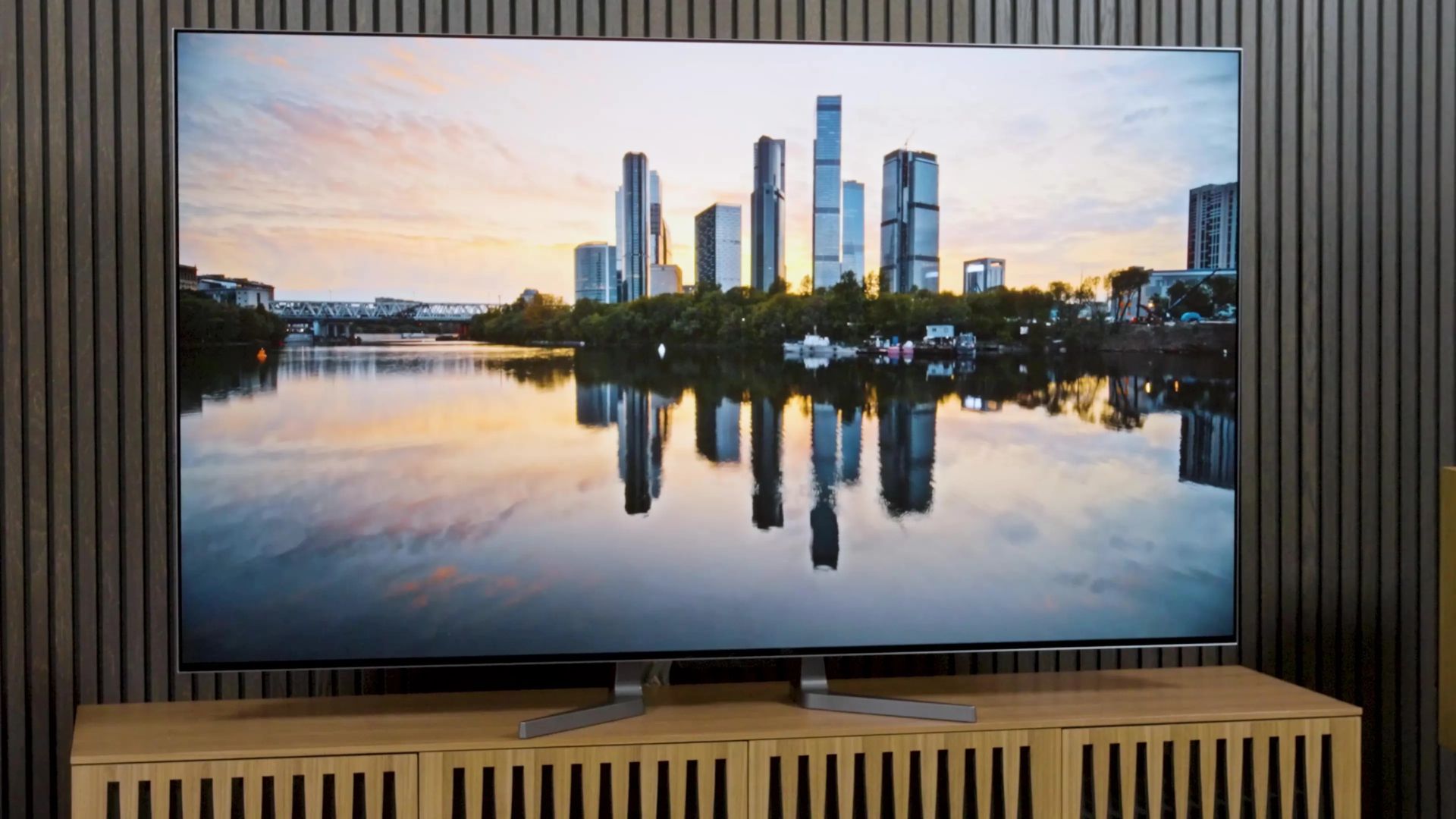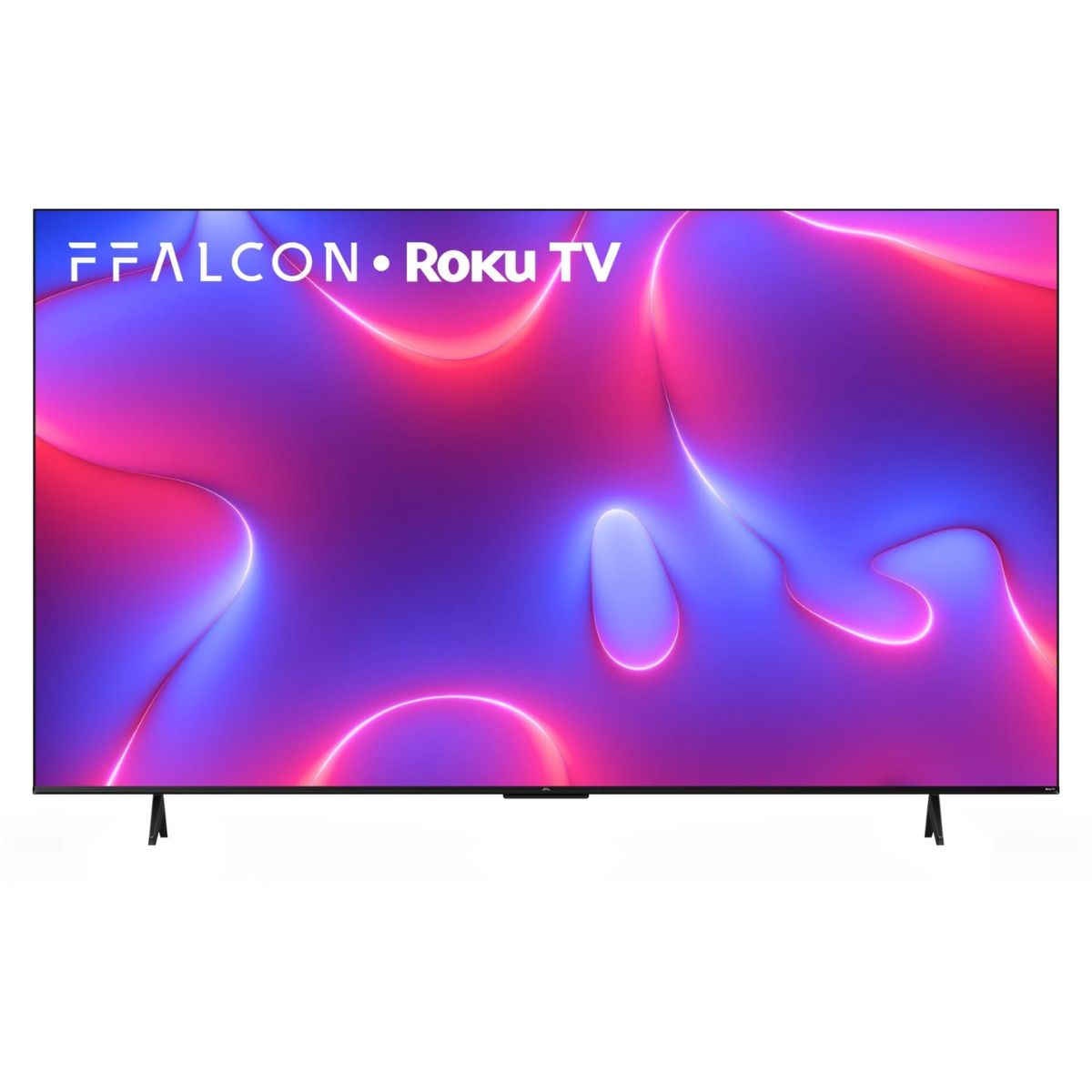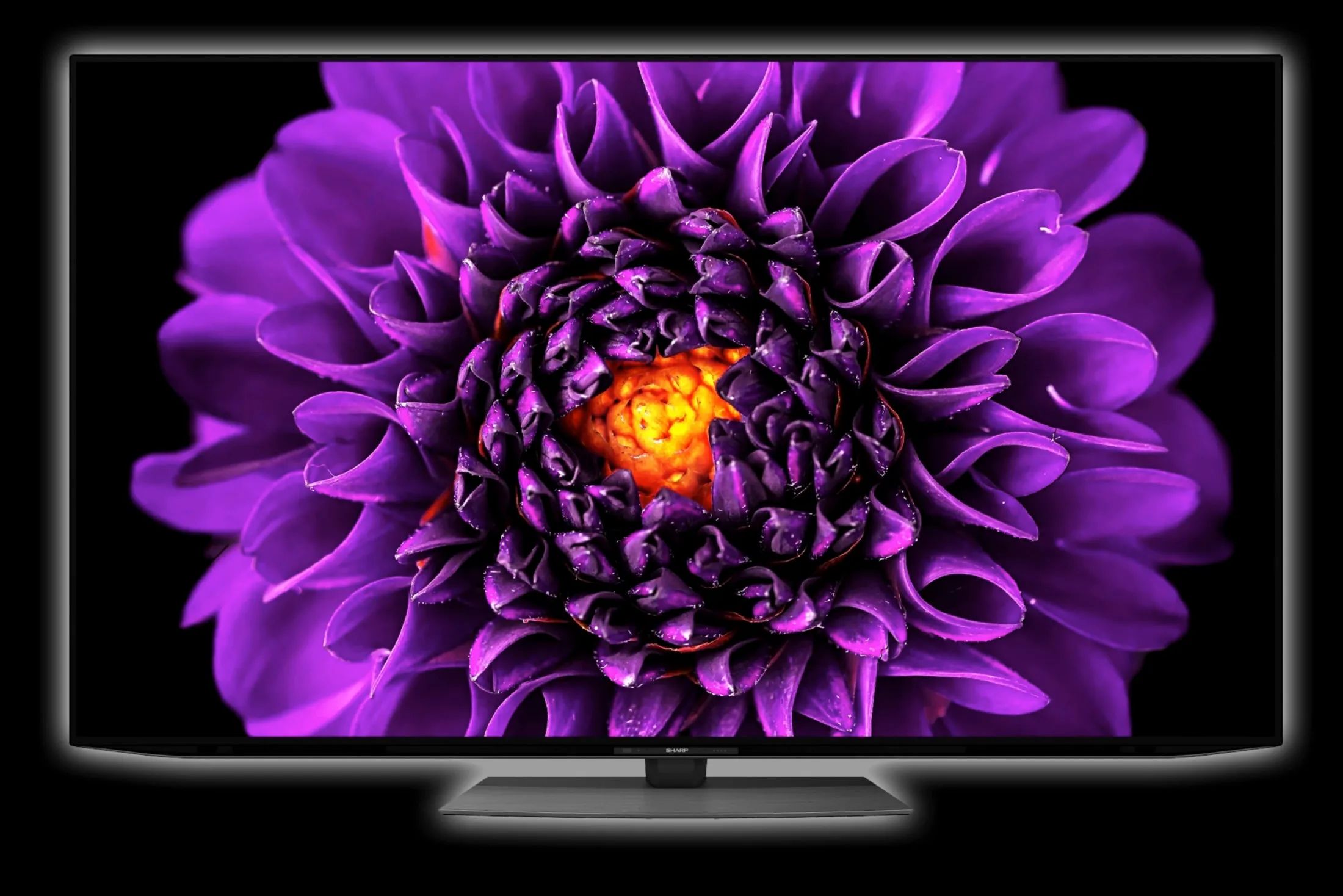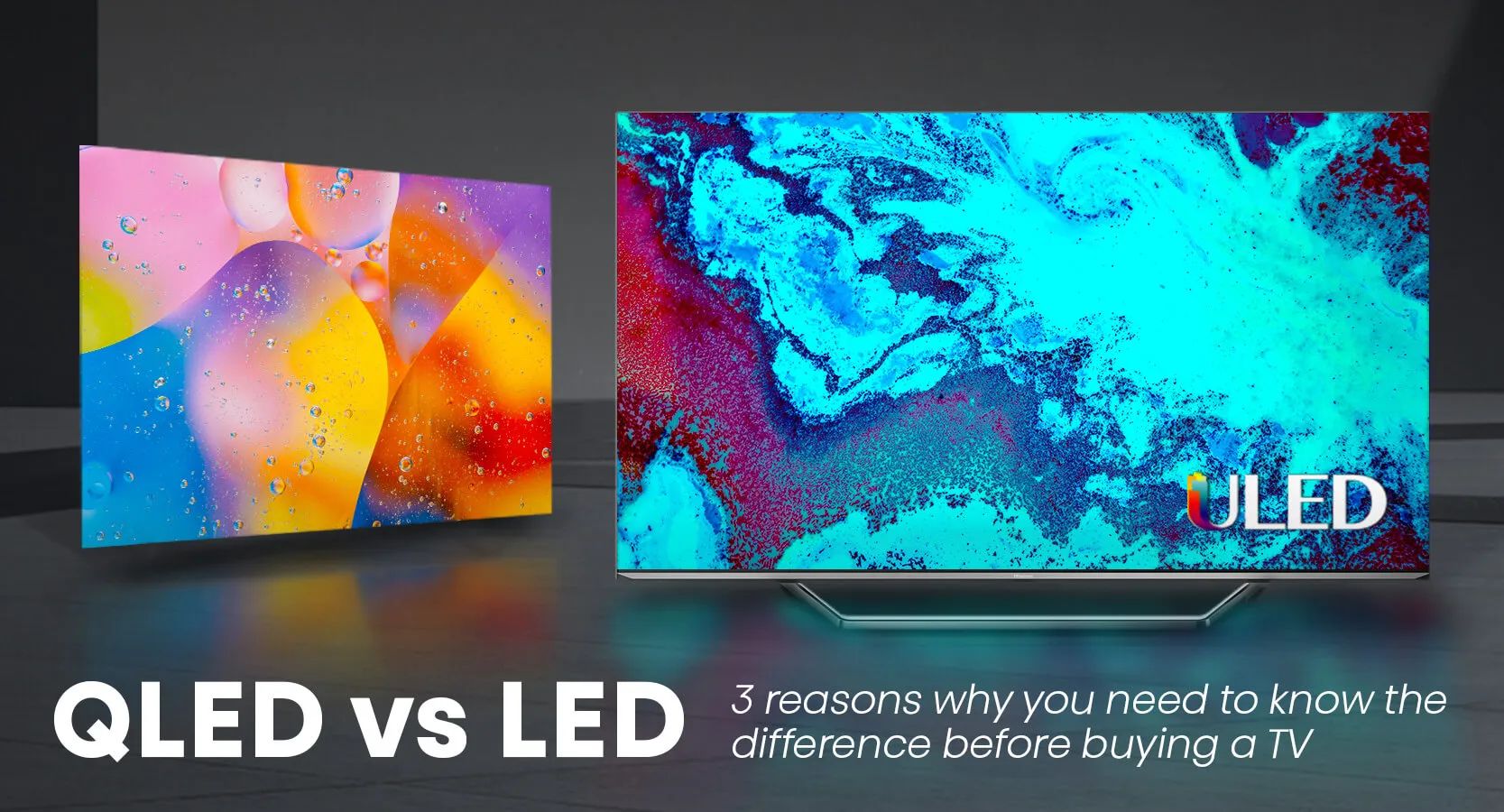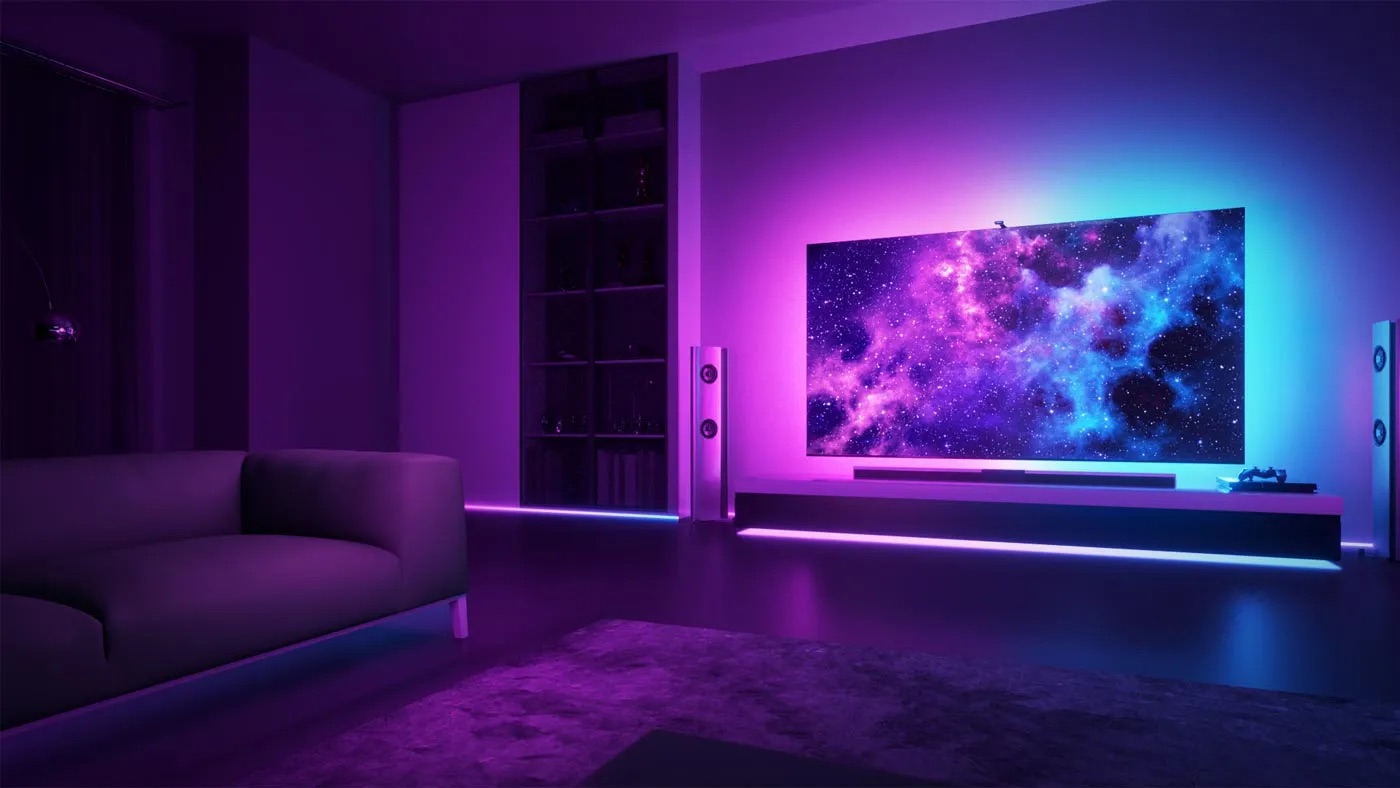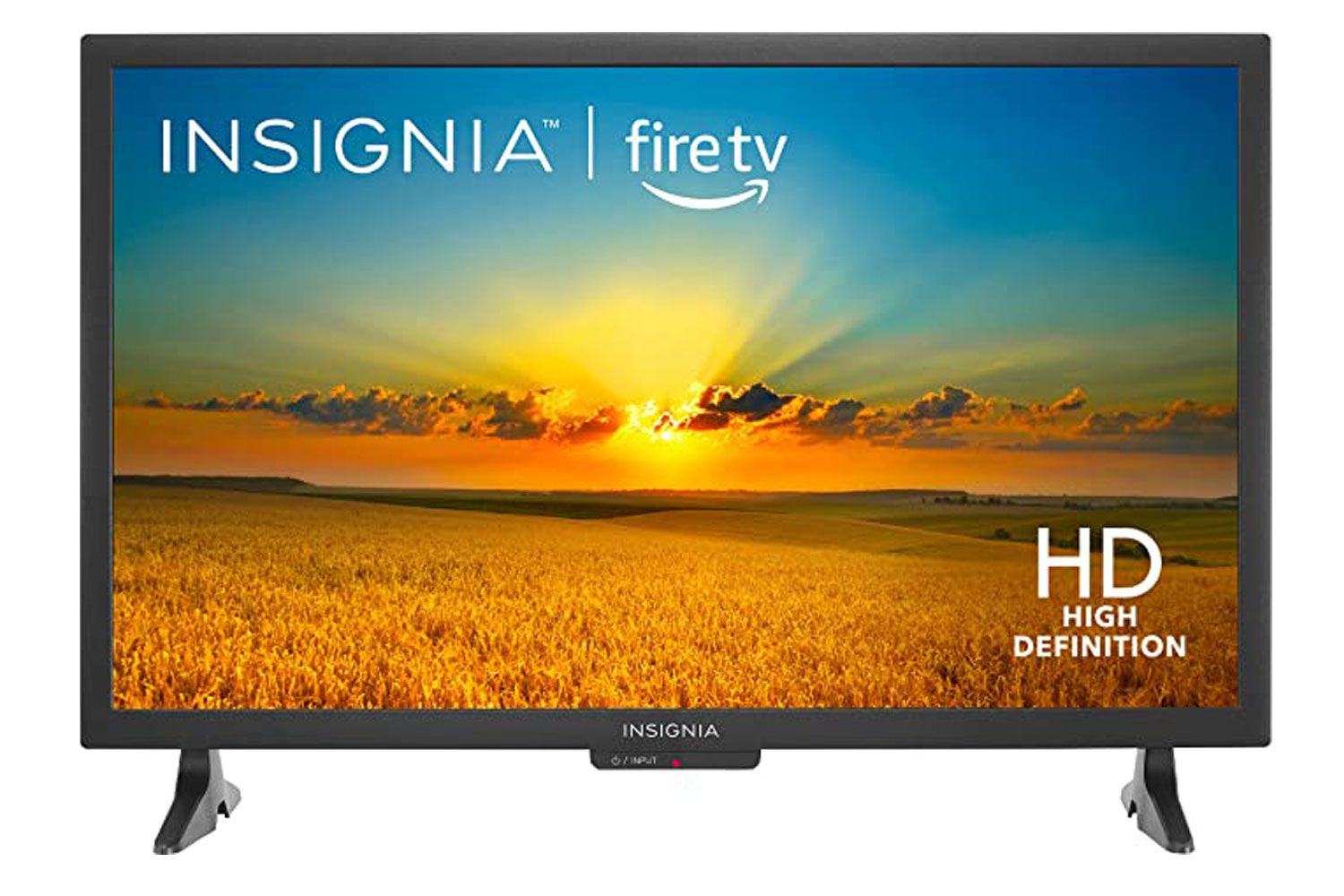Introduction
Welcome to the world of LED TVs! In this article, we will explore what LED TVs are made of and how they work. With their sleek design and vibrant display, LED TVs have become a popular choice for home entertainment systems. Whether you’re binge-watching your favorite shows, enjoying a movie night with friends, or playing video games, LED TVs offer an immersive viewing experience.
LED stands for “Light Emitting Diode,” and it refers to the technology used to illuminate the screen of the TV. Unlike their older counterparts, such as plasma and fluorescent TVs, LED TVs offer better energy efficiency, improved brightness levels, and enhanced color reproduction. These advancements have made LED TVs the preferred choice for consumers seeking high-quality visual experiences.
In this article, we will take an in-depth look at the anatomy of an LED TV. We will explore the various components that make up an LED TV, from the LED backlights to the audio equipment and connectivity ports. Understanding these elements will give you a greater appreciation for the technology behind your TV and help you make informed decisions when shopping for a new device.
Furthermore, we will delve into how LED TVs work. We will explore the intricate process of how the LEDs, LCD panel, and display drivers collaborate to create stunning images on the screen. By understanding the inner workings of an LED TV, you will gain insights into the technology responsible for delivering the visual experience you enjoy in your living room.
Now, let’s dive into the fascinating world of LED TVs and unravel the secrets behind their construction and functioning.
What is an LED TV?
An LED TV, or Light Emitting Diode TV, is a type of television that utilizes LED backlights to illuminate the screen. Unlike traditional LCD TVs that use fluorescent tubes as the source of backlighting, LED TVs employ small, energy-efficient LEDs to create stunning visuals. LED TVs are known for their slim profile, vibrant colors, and high contrast ratios.
The primary difference between an LED TV and other types of TVs lies in the method of backlighting. In an LED TV, the LEDs are positioned behind the liquid crystal display (LCD) panel, providing a consistent and uniform backlight across the entire screen. This technology allows for greater control over brightness levels, resulting in deeper blacks and more accurate color reproduction.
LED TVs come in two main types: edge-lit and full-array backlighting. In edge-lit LED TVs, the LEDs are placed around the edges of the screen, directing the light towards the center. This design allows for a slim and lightweight TV but may result in slightly uneven lighting on the screen. On the other hand, full-array LED TVs feature LEDs distributed across the entire back panel, providing more precise control over dimming and brightness levels.
LED TVs offer numerous advantages over traditional display technologies. One of the key benefits is energy efficiency. LED backlights consume significantly less power compared to fluorescent tubes, making LED TVs more environmentally friendly and cost-effective in the long run. Additionally, LED TVs have a longer lifespan, ensuring many years of enjoyable viewing without the need for frequent bulb replacements.
When it comes to picture quality, LED TVs excel in offering vibrant colors and high contrast ratios. The individual LEDs can be dimmed or turned off completely in specific areas of the screen, enhancing the dynamic range and delivering deeper blacks. This precise control over backlighting results in a more immersive viewing experience, with sharper details and more realistic visuals.
Moreover, LED TVs often come equipped with advanced features such as High Dynamic Range (HDR) and local dimming. HDR technology enhances the color range and contrast ratio, allowing for more vibrant and lifelike images. Local dimming, available in full-array LED TVs, adjusts the brightness of specific areas on the screen independently, further improving contrast and reducing blooming.
The Anatomy of an LED TV
Behind the sleek exterior of an LED TV lies a complex array of components that work together to deliver impressive visuals and immersive audio. Let’s explore the key elements that make up the anatomy of an LED TV:
- LED Backlights: As the name suggests, LED backlights are the crucial component that illuminates the screen of an LED TV. These small, energy-efficient light-emitting diodes are positioned either along the edges (edge-lit) or behind the entire display panel (full-array). LED backlights provide the necessary light to showcase the images and videos on the screen.
- Liquid Crystal Display (LCD) Panel: The LCD panel acts as the canvas for the visual content displayed on the TV. It consists of millions of liquid crystal pixels that can twist and manipulate light passing through them. When combined with the precise backlighting from the LEDs, the LCD panel creates the vibrant and detailed images that we see on the screen.
- Display Driver: The display driver controls the electrical signals that activate the liquid crystal pixels within the LCD panel. It coordinates with the image processor, converting the incoming video signals into the necessary electric signals that drive the pixels to display the desired colors and details accurately.
- Color Filters: Color filters are responsible for accurately reproducing the wide spectrum of colors on the screen. They are positioned in front of the LCD panel and work in conjunction with the backlighting to achieve precise color accuracy and vibrancy. The color filters enable the TV to display rich, lifelike colors that enhance the viewing experience.
- Polarizers: Polarizers play a crucial role in controlling the light that passes through the LCD panel. They ensure that the light is properly polarized before reaching the liquid crystal pixels. Polarizers help to enhance contrast ratios, reduce glare, and ensure optimal viewing angles. They also help to maintain the overall image quality and sharpness.
- Power Supply: The power supply unit is responsible for providing the necessary electrical power to the various components of the LED TV. It converts the incoming AC power from the wall outlet into the appropriate DC power required by the TV’s internal circuitry and backlighting system.
- Electrical Circuitry: The electrical circuitry of an LED TV controls the various functions and features of the device. It includes the main circuit board (also known as the motherboard), which houses the central processing unit (CPU), memory, and other essential electronics. The circuitry also incorporates the connectivity ports, control buttons, and input/output interfaces.
- Audio Equipment: In addition to stunning visuals, LED TVs often come equipped with built-in audio equipment. This typically includes speakers positioned on the front or sides of the TV. Some models may also feature advanced audio technologies, such as Dolby Atmos or virtual surround sound, to deliver an immersive audio experience.
- Connectivity Ports: LED TVs offer a range of connectivity options to connect external devices. These include HDMI ports for connecting gaming consoles, Blu-ray players, and set-top boxes, USB ports for media playback and device charging, as well as audio input/output jacks for connecting sound systems or headphones.
These components work together seamlessly to create the stunning visuals and captivating audio that LED TVs are known for. Understanding the anatomy of an LED TV can enhance your appreciation for the technology behind these modern entertainment devices.
LED Backlights
LED backlights are the heart of an LED TV. They are responsible for illuminating the screen and providing the necessary light for displaying images and videos. LED backlights offer several advantages over traditional fluorescent tube backlights, making them a popular choice in modern TVs.
There are two main types of LED backlighting used in LED TVs: edge-lit and full-array backlighting.
Edge-lit LED Backlights: In edge-lit LED TVs, the LEDs are positioned along the edges of the screen. Light emitted from these LEDs is spread across the display panel using light guides and diffusers. This design allows for a thin and lightweight TV, making it aesthetically pleasing and ideal for wall-mounting. However, edge-lit TVs may experience some drawbacks, such as slightly uneven lighting and a limited ability to control localized brightness.
Full-array LED Backlights: Full-array LED TVs, on the other hand, feature LEDs distributed across the entire back panel behind the LCD display. This design allows for more precise control over dimming and brightness levels, as each LED can be independently controlled. The ability to control localized brightness, known as local dimming, enhances contrast and delivers deeper blacks. Full-array backlighting typically offers better overall picture quality, particularly in scenes with dark and bright areas.
LED backlights offer several advantages over traditional fluorescent tube backlights. LED technology is more energy-efficient, consuming less power and generating less heat. This not only reduces energy costs but also contributes to a longer lifespan for the TV. LED backlights also contribute to better image quality by providing higher brightness levels and a wider color gamut. They produce more accurate and vibrant colors, resulting in a more immersive viewing experience.
Another benefit of LED backlights is their rapid response time, which helps minimize motion blur in fast-paced action scenes or sports broadcasts. LED TVs with higher refresh rates and response times provide smoother and clearer motion, enhancing the overall visual experience.
LED backlights also offer better control over uniformity and consistency of lighting. With localized dimming capabilities in full-array LED TVs, specific areas of the screen can be darkened or brightened as needed, resulting in improved contrast ratios and minimizing light bleeding between adjacent areas of the display.
Overall, LED backlights are a crucial element in LED TVs, providing energy-efficient lighting, vibrant colors, better contrast, and improved motion handling. Whether you choose an edge-lit or full-array LED TV, the advancements in LED backlighting technology have significantly enhanced the visual experience offered by modern televisions.
Liquid Crystal Display (LCD) Panel
The liquid crystal display (LCD) panel is a fundamental component of an LED TV. It acts as the canvas upon which the visuals are displayed. The LCD panel consists of millions of liquid crystal pixels that can twist and manipulate light to create images.
When the LED backlights emit light, it passes through the LCD panel. The liquid crystal pixels in the panel act as shutters, either allowing or blocking the light’s passage. By manipulating the liquid crystals, the TV can control the amount of light that reaches each pixel, resulting in precise image formation.
The LCD panel is composed of two glass plates with liquid crystal material sandwiched between them. On the inner surface of each glass plate, a transparent electrode is layered. These electrodes create an electric field when a voltage is applied to them. The liquid crystal material responds to this electric field by twisting its molecules, thus manipulating the passage of light.
Each pixel in the LCD panel comprises three sub-pixels, one for red, one for green, and one for blue. These sub-pixels work together to produce a full-color image. By adjusting the voltage applied to each sub-pixel, the intensity of the corresponding color can be regulated, resulting in a wide range of colors and shades.
One limitation of LCD technology is that it relies on external backlighting to create the images. This can lead to some drawbacks, such as limited contrast levels and the presence of backlight bleeding. Backlight bleeding occurs when the backlighting leaks through the liquid crystal layer, causing uneven lighting in certain areas of the screen.
To mitigate these issues, techniques such as local dimming and advanced polarizers are employed. Local dimming, available in full-array LED TVs, controls the brightness of specific regions on the screen, improving contrast and reducing backlight bleeding. Advanced polarizers help enhance contrast ratios, reduce glare, and optimize viewing angles, ensuring the best possible image quality.
Thanks to advancements in LCD panel technology, modern LED TVs offer impressive picture quality with vibrant colors, sharp details, and high resolution. The combination of LED backlights and the LCD panel allows for precise control over light transmission, resulting in accurate color reproduction and a dynamic overall visual experience.
Overall, the LCD panel is a crucial component in LED TVs, playing a vital role in forming the images on the screen. Its ability to manipulate light and display vibrant colors ensures a captivating viewing experience for users.
Display Driver
The display driver is a critical component of an LED TV that ensures the proper functioning of the liquid crystal display (LCD) panel. It acts as an intermediary between the incoming video signals and the LCD pixels, converting the electronic signals into the necessary electric fields that drive the pixels to display the desired colors and details accurately.
The display driver comprises electronic circuits and integrated circuits (ICs) responsible for controlling and managing the pixel information received from the video source. It analyzes the incoming video signals and determines the appropriate voltage levels and timing for each pixel to achieve the desired image representation.
One of the key functions of the display driver is to regulate the timing and synchronization of the pixel data. It ensures that the correct information is applied to each pixel at the appropriate time, allowing for a smooth and seamless display transition between frames. This synchronization is crucial in preventing visual artifacts, such as tearing or stuttering, which can detract from the viewing experience.
Another important aspect of the display driver is its ability to control the gray levels of the pixels. Grayscale refers to the shades of gray between pure black and pure white. By adjusting the voltage levels sent to each pixel, the display driver can accurately represent a wide range of gray shades, contributing to improved contrast and image depth.
Furthermore, the display driver plays a role in managing the power consumption of the LED TV. By optimizing the voltage levels and timing for each pixel, it ensures efficient power usage, contributing to energy savings and prolonging the lifespan of the TV.
The display driver also handles various image processing tasks, such as gamma correction, color correction, and video scaling. Gamma correction adjusts the relationship between the input signal and the luminance output of the LED TV, ensuring accurate brightness levels across the display. Color correction helps to maintain consistent and vibrant color reproduction, compensating for any color inaccuracies. Video scaling, often performed by the display driver, upscales or downscales the incoming video signals to match the native resolution of the TV display.
In modern LED TVs, the display driver is often integrated into a single integrated circuit (IC) known as the timing controller. This controller manages the timing signals, pixel data, and video processing functions, making the display driver more efficient and compact.
Overall, the display driver is a crucial component in an LED TV, responsible for converting video signals into the appropriate electric fields that drive the pixels in the LCD panel. By ensuring accurate timing, grayscale representation, and image processing, the display driver plays a vital role in delivering the vibrant, sharp, and high-quality visuals we enjoy on our LED TVs.
Color Filters
Color filters are an essential component in LED TVs that help accurately reproduce the wide spectrum of colors displayed on the screen. Positioned in front of the liquid crystal display (LCD) panel, color filters work in conjunction with the backlighting system to ensure precise color accuracy and vibrant visuals.
LED TVs utilize a color model known as RGB, which stands for red, green, and blue. These three primary colors, when combined in different intensities, can create virtually all the colors visible to the human eye. Each pixel in the LCD panel consists of three sub-pixels, one for each primary color, and the color filters play a crucial role in filtering the light emitted by the LED backlights to achieve the desired color composition.
The color filters are designed to transmit only the specific wavelengths of light corresponding to their respective primary colors. The red color filter transmits red light, the green color filter transmits green light, and the blue color filter transmits blue light. By controlling the intensity of each color filter, different colors can be displayed on the screen, ranging from deep blues to vibrant greens to vivid reds.
Color accuracy is a critical aspect of LED TV performance, especially when it comes to displaying realistic and true-to-life images. The color filters help achieve accurate color representation by selectively allowing the desired primary colors to pass through while blocking unwanted wavelengths. This process ensures that the colors displayed on the screen faithfully match the original content, enhancing the viewing experience.
However, achieving accurate and vibrant colors is not as simple as just using the basic color filters. The color reproduction in LED TVs is further enhanced through various techniques, such as advanced color filter arrays. These arrays consist of sub-pixels with modified color filter configurations, allowing for tighter color control and improved color gamut.
LED TVs equipped with wider color gamut capabilities, such as the popular Rec. 2020 or DCI-P3 color spaces, can display an extended range of colors, resulting in more lifelike and immersive visuals. Advanced color filters, along with high-quality LED backlights and image processing technologies, contribute to achieving a wide color gamut and improved color accuracy.
Color filters are an integral part of the LED TV’s display system, working in harmony with other components to produce accurate and vibrant colors on the screen. By carefully controlling the transmission of light, the color filters ensure that the colors displayed on the LED TV are rich, true-to-life, and visually compelling.
Polarizers
Polarizers play a crucial role in LED TVs by controlling the light passing through the liquid crystal display (LCD) panel. They help optimize contrast ratios, reduce glare, and ensure optimal viewing angles, ultimately contributing to the overall image quality and sharpness.
Polarizers are optical filters that allow light waves oscillating in a specific direction to pass through while blocking light waves oscillating in other directions. They consist of a thin film coated with microscopic grooves that align the incoming light waves in a particular direction.
In LED TVs, two polarizers are typically used: the first polarizer is positioned in front of the LCD panel, and the second polarizer is placed on the backside of the LCD panel. These polarizers work in tandem to control the polarization of the light before it passes through the liquid crystals.
The first polarizer, also known as the polarizing beam splitter, vertically polarizes the light emitted from the LED backlight. When this vertically polarized light passes through the liquid crystal layer, it either twists or remains in its original orientation based on the electric field applied to the liquid crystals by the display driver.
The second polarizer, known as the analyzer, is oriented at a 90-degree angle to the first polarizer. It only allows light waves with the same orientation as its polarizing direction to pass through, effectively filtering out light waves that are not aligned. The second polarizer acts as a gate, selectively allowing the light to transmit to the viewer’s eyes, based on the liquid crystals’ orientation.
By controlling the polarization of light, the polarizers help to optimize the contrast ratio of the display. When there is no electric field applied to the liquid crystals, the light passing through the first polarizer is blocked by the second polarizer, resulting in a dark image. However, when an electric field is applied, the liquid crystals twist and align with the electric field, allowing light to pass through the second polarizer, creating a bright pixel.
Furthermore, polarizers help reduce glare and improve visibility by selectively blocking reflected light waves. They minimize the impact of ambient light and effectively increase the perceived contrast of the displayed image. Additionally, polarizers help maintain consistent image quality and sharpness across a wide range of viewing angles, ensuring that the screen can be viewed from various positions without significant color or contrast degradation.
Advanced polarizer technologies have been developed to further enhance the overall performance of LED TVs. These technologies include circular polarizers, which offer improved viewing angles and reduced color shifts, and anti-glare coatings, which minimize reflections and provide a clearer, more comfortable viewing experience.
In summary, polarizers play a critical role in LED TVs, helping optimize contrast ratios, reduce glare, and ensure optimal viewing angles. By carefully controlling the polarization of light, polarizers contribute to delivering high-quality images with enhanced clarity and visibility on LED TV screens.
Power Supply
The power supply unit of an LED TV is responsible for providing the necessary electrical power to all the components within the TV. It plays a crucial role in converting the incoming AC (alternating current) power from a wall outlet into the appropriate DC (direct current) power required by the TV’s internal circuitry and backlighting system.
The power supply unit consists of various components, such as transformers, rectifiers, capacitors, and voltage regulators, which work together to ensure a stable and reliable power output.
Transformers are used to step down the high voltage of the incoming AC power to a lower voltage suitable for the TV’s internal circuitry. This step-down voltage is then fed into a rectifier circuit, which converts the AC power to DC power by rectifying the voltage waveform.
Capacitors are employed in the power supply to store and regulate the energy, ensuring a consistent power output. They help smooth out any voltage fluctuations or ripple caused during the rectification process, ultimately providing a clean and steady supply of DC power to the TV’s components.
Furthermore, voltage regulators are utilized to maintain a constant voltage level within the TV, despite any variations or fluctuations in the input power supply. They ensure that the components receive the appropriate voltage required for their optimal performance, preventing overvoltage or undervoltage situations.
One primary consideration in LED TVs is energy efficiency. Power supply units in LED TVs are designed to meet energy-saving standards and regulations. These standards aim to reduce power consumption during normal operation as well as standby or idle modes, helping to minimize energy waste and decrease electricity costs.
The efficient power supply unit also contributes to the longevity of an LED TV. By delivering clean and stable power to the components, it helps reduce the stress on the electrical circuitry, minimizing the risk of component failures and extending the overall lifespan of the TV.
In addition to its internal functions, the power supply unit may also feature various protective mechanisms, such as overcurrent protection, overvoltage protection, and surge protection. These safety measures ensure that the TV is protected from power surges or fluctuations, safeguarding the internal components from potential damage.
LED TVs often come with power-saving features, such as automatic power-off timers and energy-saving modes. These features allow users to customize their TV usage to consume less power, contributing to environmental sustainability and reducing energy costs.
In summary, the power supply unit is a critical component in LED TVs, responsible for converting the incoming AC power into the necessary DC power required by the TV’s components. With a focus on energy efficiency and power stability, the power supply unit ensures optimal performance, longevity, and safety in LED TVs.
Electrical Circuitry
The electrical circuitry of an LED TV serves as the backbone that controls the various functions and features of the device. It comprises a complex network of electronic components and circuits that allow for seamless operation and interaction with external devices.
At the heart of the electrical circuitry is the main circuit board, also known as the motherboard. The motherboard houses the central processing unit (CPU), memory, and other essential electronic components that power the TV. It acts as the control center, processing commands and data to ensure smooth operation and efficient utilization of resources.
The CPU, or microprocessor, serves as the brain of the TV, executing instructions and managing the overall operation. It handles tasks such as decoding video signals, driving the display, and running the TV’s operating system and applications.
Memory modules, such as RAM (Random Access Memory), are crucial components of the electrical circuitry. They provide temporary storage for data and instructions, allowing for quick access and retrieval of information. This enables the TV to handle multitasking, store frequently accessed data, and ensure smooth performance.
The electrical circuitry also includes various integrated circuits (ICs) that are responsible for specific functions. For example, the image processor IC manages the processing and enhancement of visual content, optimizing colors, contrast, and image sharpness. Audio processing ICs handle the decoding and amplification of audio signals, delivering immersive sound experiences.
The electrical circuitry is interconnected through a network of printed circuit boards (PCBs), electrical traces, and connectors. These components facilitate the flow of electrical signals between different parts of the TV, allowing for seamless communication and data transfer.
Connectivity ports are an essential part of the electrical circuitry, enabling users to connect external devices. Common ports include HDMI (High-Definition Multimedia Interface) for connecting gaming consoles, Blu-ray players, and other multimedia devices, USB ports for data transfer and media playback, audio input/output jacks for connecting sound systems or headphones, and network ports for internet connectivity.
In addition to the core components, the electrical circuitry incorporates control buttons, remote sensor receivers, and other user interface elements that facilitate operation and interaction with the TV. These components provide users with convenient access to settings, functionalities, and navigation features.
Advanced LED TVs may also feature smart capabilities, integrating Wi-Fi or Ethernet connectivity to access online streaming platforms, web browsing, and other internet-based services. These features enhance the versatility and functionality of the TV, allowing for a more connected and interactive entertainment experience.
Overall, the electrical circuitry forms the intricate network that powers and controls the LED TV’s operation. By leveraging the capabilities of various components, circuits, and connectors, it ensures seamless functionality, performance, and connectivity, enabling users to enjoy a wide range of entertainment options at their fingertips.
Audio Equipment
The audio equipment in an LED TV is responsible for delivering clear and immersive sound to accompany the stunning visuals on the screen. While the primary focus of LED TVs is on high-quality visuals, audio plays a vital role in enhancing the overall entertainment experience.
In most LED TVs, built-in speakers are positioned strategically within the TV chassis. These speakers are designed to produce sound that complements the on-screen action and dialogue. While the speaker quality may vary depending on the specific TV model, they are generally engineered to deliver adequate audio performance for everyday viewing.
Advanced LED TVs often feature technologies that enhance the audio experience. One such technology is Dolby Atmos, which is designed to create a more immersive and three-dimensional soundstage. Through the use of audio objects and overhead speakers, Dolby Atmos adds a sense of depth and verticality to the sound, making it feel more realistic and enveloping.
Virtual surround sound is another audio enhancement technology found in many LED TVs. By manipulating the audio signals, virtual surround sound creates a wider sound stage, giving the impression that sound is coming from various directions. This technology is particularly useful for simulating a surround sound experience without the need for external speakers.
For those seeking a more immersive audio experience, LED TVs often include audio output options. These may include digital audio output ports, such as HDMI ARC (Audio Return Channel) or optical audio, which allow for connectivity to external sound systems or soundbars. These external audio systems can deliver a more robust, cinematic sound experience, making them a popular choice for avid movie watchers or gamers.
LED TVs with higher-end audio systems may incorporate additional audio features such as equalizers and sound presets. These allow users to fine-tune the audio output according to their preferences or select pre-configured audio modes optimized for specific content types, such as movies, music, or sports.
Energy-saving features are also present in the audio equipment of LED TVs. When the TV is idle or not in use, power-saving modes often reduce the power output of the speakers, contributing to overall energy efficiency without compromising the basic audio functionality.
Ultimately, the audio equipment in LED TVs aims to deliver a satisfying audio experience that complements the high-quality visuals. Whether through built-in speakers, advanced audio technologies, or connections to external sound systems, the audio equipment ensures that viewers can immerse themselves in the audio aspects of their favorite movies, shows, or games.
Connectivity Ports
Connectivity ports are an essential feature of LED TVs, providing users with the ability to connect various external devices and expand the entertainment options available. These ports serve as gateways, allowing seamless integration of other multimedia devices and enhancing the versatility of the TV.
One common connectivity port found in LED TVs is HDMI (High-Definition Multimedia Interface). HDMI ports enable users to connect devices such as gaming consoles, Blu-ray players, streaming devices, and set-top boxes. HDMI cables transmit both high-definition video and audio signals, ensuring a convenient and high-quality connection.
USB ports are also a standard feature in most LED TVs. These ports serve multiple purposes, allowing users to connect USB storage devices to access and play media files directly on the TV. USB ports can also be used for firmware updates, enabling the TV to receive the latest software improvements and enhancements.
Audio input/output jacks are another common type of connectivity port found on LED TVs. These ports provide options for connecting external audio devices, such as sound systems or headphones. Audio output jacks allow users to route the TV’s audio to external speakers or audio systems for an enhanced sound experience.
In addition to audio and video connectivity, LED TVs often include network connectivity ports, such as Ethernet ports or built-in Wi-Fi. These ports allow for internet connectivity, enabling users to access online streaming platforms, browse the web, and download applications directly on the TV. This feature enhances the TV’s functionality, providing access to a vast array of online content and services.
Other essential connectivity ports commonly found on LED TVs include component video inputs, composite video inputs, and analog audio inputs. These ports are useful for connecting older devices, such as DVD players or older gaming consoles, that may not have HDMI capabilities.
LED TVs may also offer additional connectivity options, such as VGA (Video Graphics Array) or DVI (Digital Visual Interface) ports, allowing for connection to computers or other devices that use these formats. However, these ports are becoming less common as HDMI has become the standard connection for high-definition video and audio signals.
The number and variety of connectivity ports available on LED TVs can vary depending on the model and manufacturer. It is essential to consider the specific connectivity requirements and desired functionality when purchasing an LED TV. Having multiple connectivity options ensures flexibility and convenience, allowing users to seamlessly integrate different devices and accessories with their TV.
In summary, connectivity ports are vital components of LED TVs, enabling users to expand their entertainment options and integrate various external devices. Whether it’s HDMI for video and audio connections, USB ports for media playback and updates, or network connectivity for online streaming, these ports enhance the TV’s versatility and ensure a broader range of entertainment possibilities.
How LED TVs Work
LED TVs are powered by a combination of advanced technologies working together to create stunning visuals. Understanding how these technologies function will provide insight into the inner workings of an LED TV.
The process begins with LED backlights, which are positioned behind the liquid crystal display (LCD) panel. These backlights emit light that passes through the LCD panel. The LCD panel consists of millions of liquid crystal pixels that can twist and manipulate the light’s passage.
The LCD panel receives electrical signals from the display driver, which analyzes the incoming video signals and converts them into the necessary electric fields that control the liquid crystals. Depending on the instructions received, these liquid crystals either twist or remain in their original orientation.
The combination of the twisted liquid crystals and the LED backlights creates a wide range of colors and shades. The color filters, positioned in front of the LCD panel, selectively transmit the desired primary colors — red, green, and blue — to display the accurate color composition on the screen.
Meanwhile, the polarizers control the light’s polarization, ensuring optimal contrast ratios, reducing glare, and maintaining consistent image quality across various viewing angles. This polarized light passes through the pixels and reaches the viewer’s eyes, resulting in the vibrant and detailed visuals seen on an LED TV.
Simultaneously, the power supply unit provides the necessary electrical power to all the components of the LED TV. It converts the incoming AC power from a wall outlet into the appropriate DC power required by the TV’s internal circuitry and backlighting system.
Audio equipment within the LED TV delivers accompanying sound to enhance the viewing experience. Whether through built-in speakers or connections to external sound systems, the audio equipment ensures clear and immersive audio to complement the visuals.
Connectivity ports further expand the functionality of LED TVs, allowing users to connect external devices such as gaming consoles, Blu-ray players, and sound systems. HDMI, USB, and audio input/output ports provide convenient access to a range of multimedia and enhance the versatility of the TV.
Together, these technologies work harmoniously to create the captivating experience of an LED TV. From the LED backlights to the LCD panel, display driver, color filters, polarizers, power supply, audio equipment, and connectivity ports, each component plays a crucial role in delivering high-quality visuals and immersive sound.
Understanding how LED TVs work provides a deeper appreciation for the engineering and technology behind these modern entertainment devices. It also helps consumers make informed choices when selecting an LED TV that meets their desired specifications and viewing preferences.
Conclusion
LED TVs have revolutionized the way we experience visual entertainment in our homes. We have explored the intricate anatomy of an LED TV, from the LED backlights that illuminate the screen to the LCD panel, display driver, color filters, polarizers, power supply, audio equipment, and connectivity ports that work together to create stunning visuals and immersive sound.
LED TVs offer numerous advantages over traditional display technologies. With their energy-efficient LED backlights, these TVs consume less power, contributing to environmental sustainability and cost savings. The LCD panel, with its liquid crystal pixels, allows for precise control over color reproduction, contrast ratios, and image depth. The polarizers optimize viewing angles and reduce glare, enhancing the overall viewing experience.
Additionally, LED TVs come equipped with various connectivity options, such as HDMI and USB ports, allowing for seamless integration with external devices and access to a wide range of multimedia content. The audio equipment, whether built-in speakers or external sound systems, complements the visuals with immersive soundscapes and enhanced audio features.
Understanding the inner workings of LED TVs empowers consumers to make informed decisions when selecting a TV that meets their preferences and requirements. By considering factors such as the type of LED backlighting, image processing technologies, audio capabilities, connectivity options, and energy efficiency, consumers can choose a TV that provides an optimal viewing experience for their needs.
As technology continues to advance, LED TVs are likely to evolve further, offering even more impressive visual and audio enhancements. From higher resolutions and wider color gamuts to advancements in backlighting technologies and smart capabilities, the future of LED TVs holds exciting possibilities.
Whether you’re enjoying a movie night with family, indulging in a gaming session, or immersing yourself in your favorite TV shows, LED TVs provide the ultimate visual and audio experience. With their sleek design, vibrant visuals, and immersive sound, LED TVs are the centerpiece of modern home entertainment systems.
So, sit back, relax, and let your LED TV transport you to a world of captivating visuals and captivating sound, as you enjoy the wonders of modern technology at its finest.







